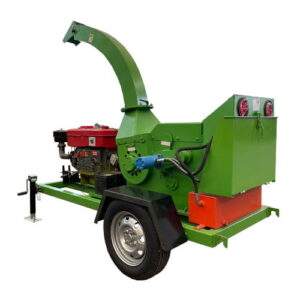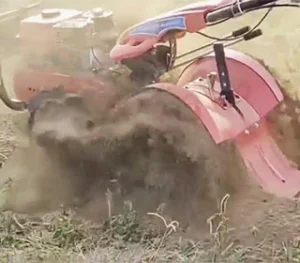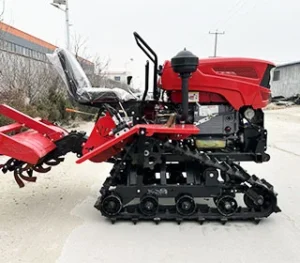The Ultimate Guide on How to Choose an Electric Wood Chipper
Introduction
Electric wood chippers are invaluable tools for gardeners, landscapers, and homeowners looking to manage yard waste efficiently. These machines offer an eco-friendly and cost-effective way to turn branches, leaves, and other organic debris into useful mulch or compost. This comprehensive guide will explore everything you need to know about electric wood chippers, including how they work, the benefits they offer, key features to look for, and maintenance tips to ensure longevity and efficiency. Whether you’re a seasoned gardener or a new homeowner, this guide will help you make an informed decision.
What is an Electric Wood Chipper?
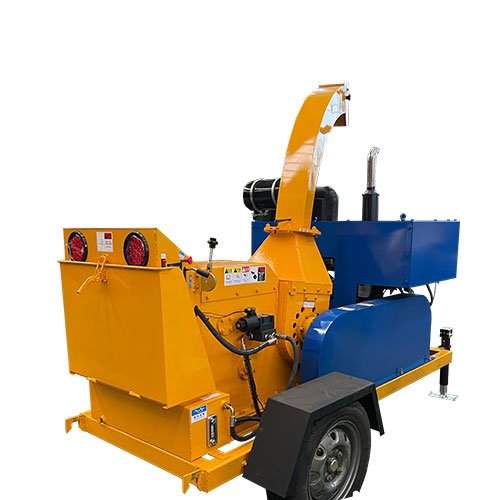
How Does an Electric Wood Chipper Work?
An electric wood chipper uses a powerful electric motor to drive blades or hammers that chop up wood and other organic materials into small chips. These machines typically feature a feed chute where the debris is fed into the chipper and an output chute where the processed material is discharged. The electric motor provides a quieter and more environmentally friendly operation compared to gas-powered models.
Types of Electric Wood Chippers
Electric wood chippers come in various sizes and configurations, designed to handle different types and amounts of yard waste. Here are the main types:
- Standard Electric Wood Chippers: Suitable for small to medium-sized yards, these chippers can handle branches up to a certain diameter.
- Electric Wood Shredder/Chipper Combos: These machines combine the functions of a chipper and a shredder, making them versatile for both woody and leafy debris.
- Heavy-Duty Electric Wood Chippers: Designed for larger properties or more demanding tasks, these chippers can process thicker branches and larger volumes of material.
Benefits of Using an Electric Wood Chipper
Environmental Advantages
One of the main benefits of using an electric wood chipper is its environmentally friendly operation. Unlike gas-powered models, electric chippers produce no emissions, reducing your carbon footprint. Additionally, by converting yard waste into mulch or compost, you can recycle organic materials and enrich your garden soil.
Cost-Effectiveness
Electric wood chippers are generally more affordable than their gas-powered counterparts, both in terms of initial purchase price and ongoing operational costs. Electricity is cheaper than gasoline, and electric motors require less maintenance, saving you money over time.
Ease of Use
Electric wood chippers are typically lighter and easier to maneuver than gas-powered models. They start with the push of a button, eliminating the need for fuel mixing and pull-starting. This makes them an excellent choice for homeowners who want a convenient and hassle-free tool.
Quiet Operation
Electric motors produce significantly less noise than gas engines, making electric wood chippers much quieter. This allows you to work in your yard without disturbing neighbors or requiring hearing protection.
Key Features to Look for in an Electric Wood Chipper
Motor Power
The power of the electric motor is a crucial factor in determining the chipper’s performance. Measured in amps, a higher amperage motor can handle thicker branches and process material more quickly. Common motor sizes range from 14 to 15 amps for residential models.
Cutting Mechanism
The cutting mechanism of an electric wood chipper can vary, with the most common types being disc, drum, and hammermill. Disc chippers use sharp blades mounted on a rotating disc to slice the material, while drum chippers use blades mounted on a drum. Hammermill chippers use hammers that pulverize the material. Each type has its advantages and is suited to different types of yard waste.
Feed and Discharge Systems
Look for an electric wood chipper with a large, easy-to-access feed chute that can accommodate various sizes of debris. Some models also feature self-feeding mechanisms that pull the material into the chipper, reducing the effort required. The discharge system should direct the chipped material into a collection bag or onto the ground for easy cleanup.
Safety Features
Safety is paramount when using an electric wood chipper. Features to look for include:
- Automatic Shutoff: Stops the motor if the chipper becomes overloaded or clogged.
- Safety Switches: Prevents the motor from starting if the chute or hopper is open.
- Stable Base and Wheels: Ensures the chipper remains steady during operation and is easy to move around the yard.
Portability and Storage
Consider the size and weight of the chipper, especially if you need to move it around your property. Look for models with sturdy wheels and handles for easy transport. Additionally, compact models are easier to store when not in use.
Comparison of Popular Electric Wood Chippers
To help you choose the right electric wood chipper for your needs, here is a detailed comparison of some popular models:
| Model | Motor Power (Amps) | Max Branch Diameter (inches) | Cutting Mechanism | Weight (lbs) | Price Range |
|---|---|---|---|---|---|
| Sun Joe CJ602E | 15 | 1.5 | Disc | 26 | $100 – $150 |
| Earthwise GS70015 | 15 | 1.75 | Drum | 31 | $150 – $200 |
| Patriot CSV-2515 | 14 | 2.5 | Hammermill | 95 | $900 – $1,000 |
| WEN 41121 | 15 | 1.5 | Disc | 23 | $120 – $170 |
| Greenworks 24052 | 15 | 1.375 | Disc | 33 | $120 – $160 |
Maintenance Tips for Your Electric Wood Chipper
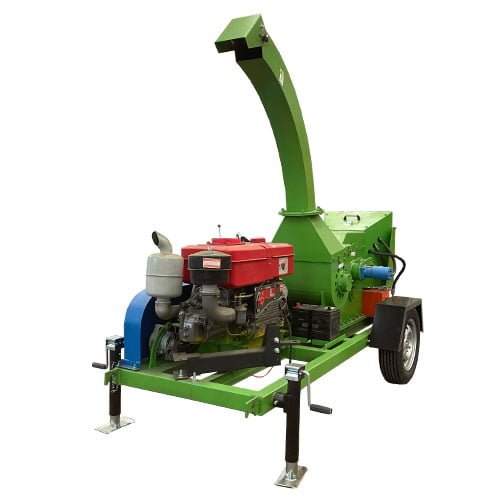
Regular Cleaning
After each use, clean the chipper thoroughly to remove any debris that may have accumulated. This prevents buildup that can lead to clogs and ensures the chipper operates efficiently.
Blade Sharpening and Replacement
Sharp blades are crucial for the effective performance of an electric wood chipper. Regularly check the blades for dullness or damage and sharpen or replace them as needed. Follow the manufacturer’s guidelines for blade maintenance.
Motor and Electrical Components
Inspect the motor and electrical components regularly for signs of wear or damage. Ensure that the power cord is in good condition and free from cuts or fraying. If you notice any issues, consult a professional for repairs.
Lubrication
Some parts of the chipper, such as the bearings and moving parts, may require lubrication to ensure smooth operation. Refer to the owner’s manual for specific lubrication points and recommended lubricants.
Storage
Store your electric wood chipper in a dry, sheltered location to protect it from the elements. Cover the machine to prevent dust and debris from accumulating when not in use.
Conclusion
Electric wood chippers are an excellent investment for anyone looking to manage yard waste efficiently and sustainably. By understanding the different types, key features, and maintenance requirements, you can select the right model for your needs and ensure it remains in top working condition for years to come. This guide provides a comprehensive overview to help you make an informed decision and get the most out of your electric wood chipper.
FAQ
What is the maximum branch diameter an electric energy wood chipper can handle?
The maximum branch diameter varies by model. Most residential electric energy wood chippers can handle branches up to 1.5 to 2.5 inches in diameter. Always check the manufacturer’s specifications to ensure the chipper meets your needs.
How do I maintain the blades on my electric energy wood chipper?
Regularly inspect the blades for dullness or damage. Sharpen the blades using a file or grinder according to the manufacturer’s instructions. Replace the blades if they are excessively worn or damaged.
Are electric wood chippers noisy?
Electric wood chippers are generally quieter than gas-powered models. However, they can still produce significant noise, especially when chipping large branches. Wearing hearing protection is recommended during operation.
Can I use an electric wood chipper for leaves and grass?
Yes, many electric wood chippers can also handle leaves and grass, especially those designed as chipper/shredder combos. However, for best results, it’s recommended to check the manufacturer’s guidelines regarding the types of materials the chipper can process.
How often should I clean my electric wood chipper?
It’s important to clean your electric wood chipper after each use to remove debris and prevent buildup. Regular cleaning helps maintain efficiency and extends the lifespan of the machine.

